It’s a common misconception that getting into golf course architecture is for rich folks only. Granted, many of the great courses are less than accessible, and some of the most famous books on the subject are rare and expensive. But just as there are a number of well-designed courses that anyone can play, there are plenty of excellent books on golf course architecture that anyone can read for the best price of all: $0.00.
You just need to track them down on the internet.
Now, I like physical books as much as the next nerd. But I also like having money for groceries and the electric bill. So whenever possible, I look for reading material online, and I’ve been surprised at how much I’ve found.
The early decades of the 20th century weren’t just the Golden Age of golf course architecture; they were also a golden age of GCA writing. And much of that writing is now in the public domain. If a book was published in 1925 or before, it’s probably somewhere on the internet, whether on Google Books, Project Gutenberg, or HathiTrust.
To search for what you want, I’d recommend using WorldCat. Just type a title into the search bar, click “View all editions” under the correct result, try to locate an e-book option, and go from there. (Bonus: WorldCat lists libraries where you can obtain print editions, if that’s your kind of thing.)
-

How to find e-books using WorldCat
-
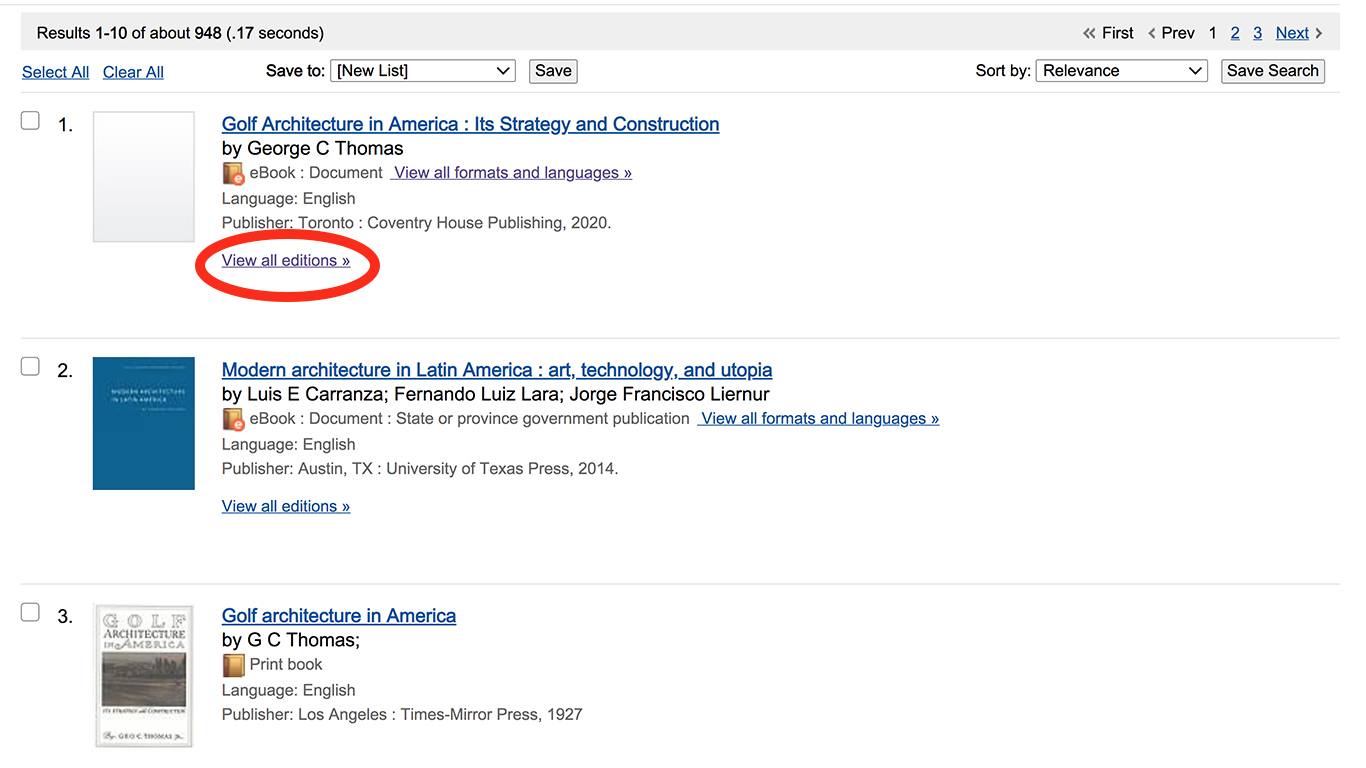
How to find e-books using WorldCat
-
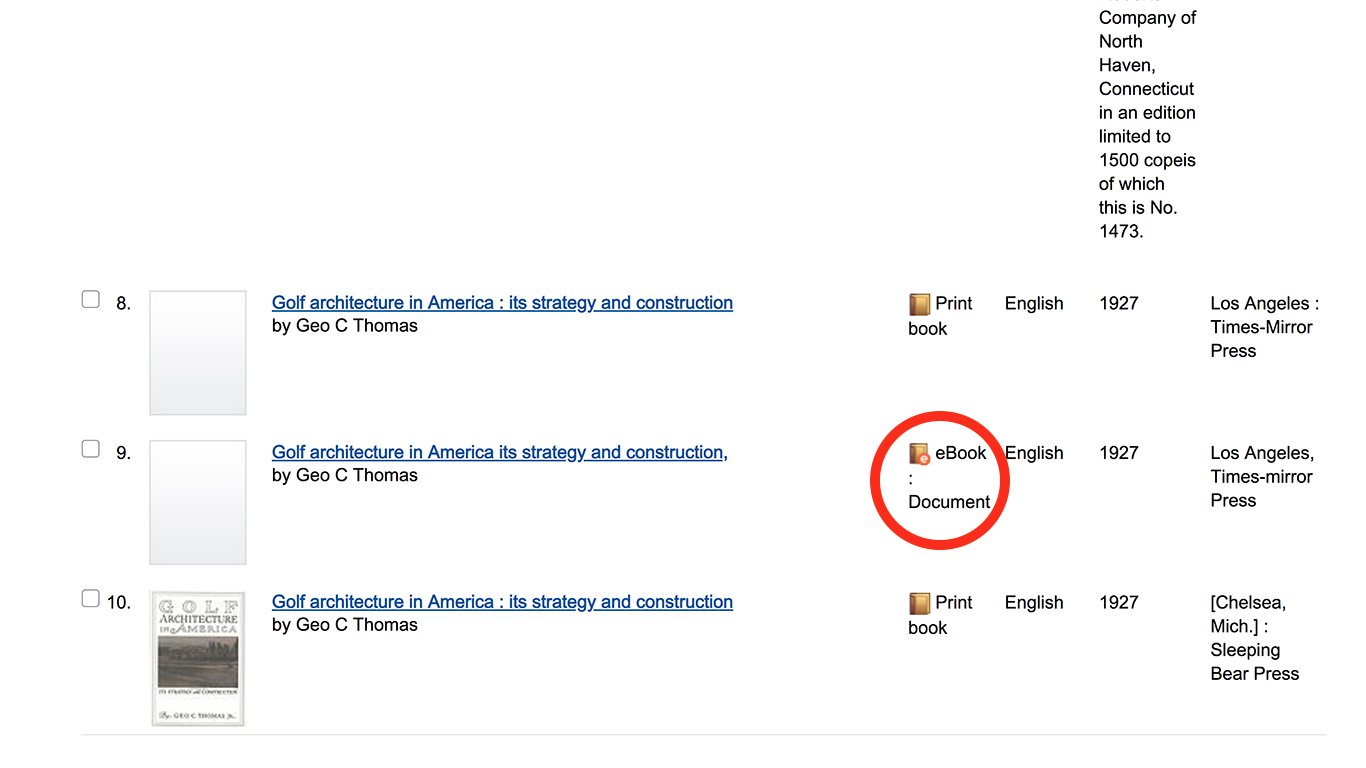
How to find e-books using WorldCat
-
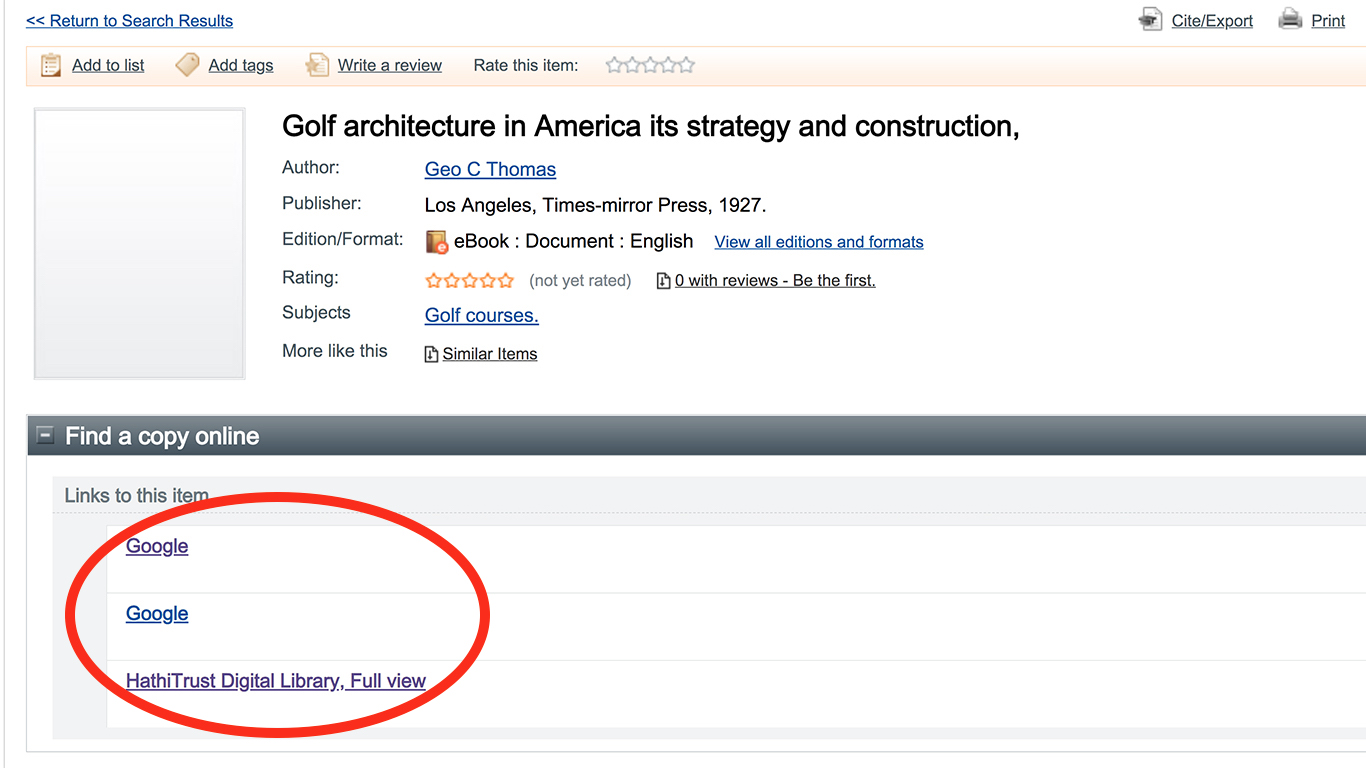
How to find e-books using WorldCat
All in all, if you were determined never to buy a golf course architecture book, you could probably find enough free, digitized publications from a century ago to sustain a lifetime of study.
Here are a few of my favorites:
Essentials
H.S. Colt and C.H. Alison, Some Essays on Golf-Course Architecture (1920)
The English architect Harry Colt was no prose stylist, and his partner Charles Alison was only slightly better, but this is a foundational text, summing up the state of the art as it stood before the Golden Age reached high tide in the 1920s. As an extra treat, there’s a guest essay on construction efficiencies from Alister MacKenzie, who would soon rise to fame in America and Australia.
Bernard Darwin, The Golf Courses of the British Isles (1910)
I can’t imagine I will ever read a better golf travel book than this one by Charles Darwin’s grandson. The course profiles are sharply, humorously observed, and the accompanying watercolors by Harry Rountree will make you want to redecorate your office.
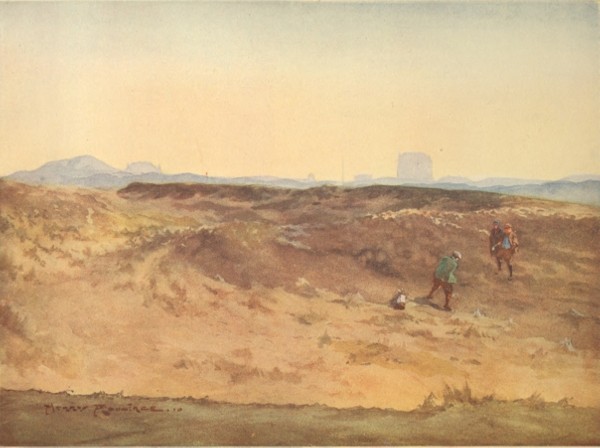
From Bernard Darwin's Golf Courses of the British Isles, Harry Rountree's painting of the Sahara bunker at Royal St. George's
John L. Low, Concerning Golf (1903)
The entire book is worth reading for historical interest, but students of golf course architecture should focus on chapter one, “Concerning the Character of the Game,” and especially chapter nine, “Concerning the Links.” At the time, Low’s arguments about the placement of hazards and the strategic aspects of hole design were highly original, though they would soon become standard.
Alister MacKenzie, Golf Architecture: Economy in Course Construction and Green-keeping (1920)
MacKenzie’s Spirit of St. Andrews, a 1930s manuscript published by Sleeping Bear Press in 1995, is the best-selling golf course architecture book of the past 30 years. What many readers don’t know, however, is that Spirit is essentially an expanded edition of MacKenzie’s first book, Golf Architecture. Released in 1920, Golf Architecture has most of the bits you’re looking for: MacKenzie’s 13 principles of design, his riffs on camouflage, and his interpretations of “ideal holes” at St. Andrews. If you want to understand the roots of today’s discourse about golf course architecture, start here.
George C. Thomas, Jr., Golf Architecture in America: Its Strategy and Construction (1927)
This is where hunting for free stuff on the internet really pays off. I’ve seen fellow obsessives pay hundreds of dollars for physical copies of Golf Architecture in America. I myself ordered a bootleg edition of dubious quality from India. But if your priority is simply to read the book, HathiTrust has you covered. Thomas, the architect behind Riviera and LACC North, is not the liveliest writer, but his thoughts on strategy, beauty, and scale are as strong and sophisticated as any in golf literature.
Supplementals
Tom Doak, Tom’s Thoughts
Doak wrote one of the best modern introductions to golf course architecture (The Anatomy of a Golf Course) and the best modern course guide (The Confidential Guide to Golf Courses), but I’d suggest starting with his one-off essays, several of which he hosts on his firm’s website under “Tom’s Thoughts.” Particular highlights are his manifesto on minimalism and his rundown of 44 decisions he made on a single day during the construction of Rock Creek Cattle Company.
Horace Hutchinson, Famous Golf Links (1891)
In golf course architecture writing, there is pre-John Low, and there is post-John Low. This survey of the British links, the first of its kind, is very much pre-Low. While Hutchinson had a sharp golf mind, he did not yet appreciate the strategic dimension of course design in a post-Low manner. (For instance, he complains about the unfairness of the chaotic “banks and braes” at St. Andrews.) He did, however, understand the spirit of seaside golf, which is arguably more important. Famous Golf Links captures the pure, rugged links as they were before the game exploded in popularity, back when North Berwick measured less than 5,000 yards and St. Andrews was often played on the left side.
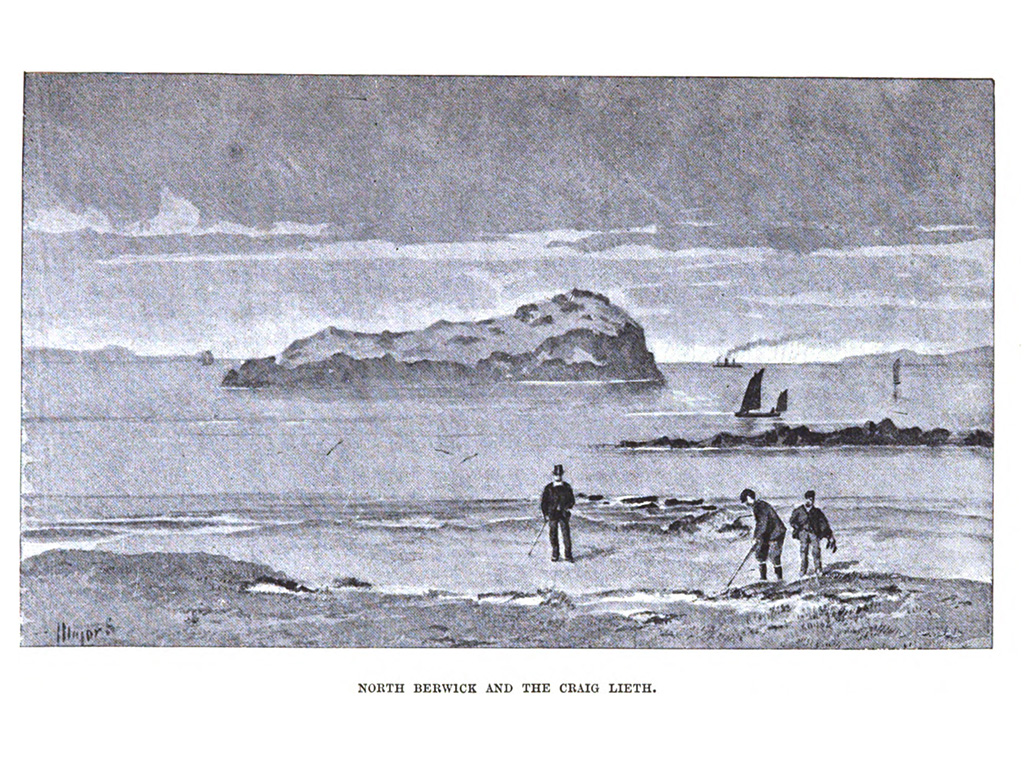
An illustration of the old North Berwick Links that appeared in Horace Hutchinson's 1891 book Famous Golf Links
Martin H.F. Sutton, ed., The Book of the Links: A Symposium on Golf (1912)
Unless you’re a turf historian, you can safely ignore this collection’s chapters on agronomy, which tackle such headache-inducing topics as manure and seed types. The good stuff is in Harry Colt’s essays on architecture and construction, and in Bernard Darwin’s delightful ramblings about the influence of course design on playing style.
Periodicals
Golf periodicals of the late 1800s and early 1900s contain a daunting amount of material—people used to write a lot and read a lot!—but browsing through them will give you a vivid sense for the game in that era. You will also find a great deal of writing about golf course architecture. I’d recommend The Golfing Annual (Vol. 1), the first major periodical devoted solely to golf, and The American Golfer (Vols. 1-2), edited brilliantly by Walter Travis from 1908 to 1920.
◊
Did we miss something? Let us know on Twitter @the_fried_egg.


 by
by 
